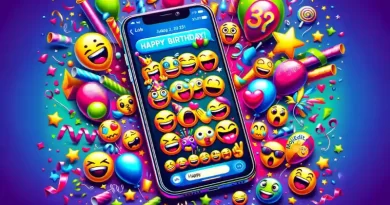ありがとう絵文字
In a world drowning in words, sometimes, less is more. Enter the Thank you ‘🙏’ emoji: a silent, potent symbol that speaks volumes. It’s the digital equivalent of a heartfelt nod, a virtual handshake, and a silent prayer of gratitude or acknowledgment. Let’s see what the emoji is really all about.
ありがとう絵文字:世界的な感謝のシンボル
The beauty of the “Thank You” emoji lies in its ability to cross language and cultural barriers. No matter where you are in the world, the gesture of folded hands or a simple “thank you” will be universally understood. However, the interpretation of the “Thank You” emoji can vary across different cultures.
In different cultures, the “Thank You” emoji represents various forms of respect and gratitude. For example, in some Asian cultures, the gesture is linked to traditional practices of showing respect.
なぜ「ありがとう」の絵文字が重要なのか
The “Thank You” emoji, often depicted as folded hands or a prayer-like gesture, has become a staple in online communication. Its importance goes beyond mere convenience; it reflects a deeper cultural and emotional resonance. This emoji means different things in various cultural contexts, symbolizing gratitude, respect, or even a simple acknowledgment.
A study by Merci Chocolates found that the average person in America says thank you five times a day, and generally, people tend to say thank you about 2000 times per year,
ありがとう絵文字の感情的インパクト
Whether you’re showing appreciation for a small favor or acknowledging huge support, the thank you emoji makes the message warmer and more sincere. A small Thank You gif can make the message even warmer and more sincere.
Consider how the “Thank You” emoji may transform a simple “thanks” into a heartfelt acknowledgment. For instance, a simple text message saying “thanks” might come off as perfunctory, but when accompanied by the “Thank You” emoji, it feels more personal and heartfelt. It’s an addition that makes your gratitude feel more genuine, enhancing the emotional impact of your message.
ありがとう絵文字の効果的な使い方
Understanding how to use the “Thank You” emoji effectively improves your communication. Here are some tips for making the most out of the versatile symbol:
-
Match the Tone: Ensure that the “Thank You” emoji matches the tone of your message. In a formal context, the emoji adds a touch of warmth without being overly casual. For informal interactions, it could complement a friendly or casual message.
-
Pair with Other Emojis: Combining the “Thank You” emoji with other emojis, like a heart or thumbs-up, may add extra meaning to your message. That may be particularly useful in expressing a more nuanced form of gratitude.
-
Consider the Context: Use the “Thank You” emoji in contexts where you want to express appreciation clearly. It’s perfect for responding to help, acknowledging efforts, or simply showing that you value someone’s gesture.
Encourage readers to learn about different ways to use the ‘Thank You’ emoji effectively.
さまざまな文脈における「ありがとう」の絵文字
Understanding the versatility of the “Thank You” emoji may improve your ability to express gratitude in various situations. From personal messages to professional interactions, the emoji adapts to different contexts, making it a valuable tool in modern communication. The ‘two hands’ emoji, often referred to as the folded hands emoji, holds cultural significance and various interpretations, expressing gratitude, prayer, or a respectful greeting in different cultures, particularly in Japanese and various Southeast Asian contexts.
個人的な交流感謝の気持ちを本物にする
In personal interactions, the “Thank You” emoji is a great way to add warmth and sincerity to your messages. In Southeast Asian cultures, particularly in Hinduism, the folded hands emoji symbolizes ‘namaste’, a respectful greeting akin to a prayer that embodies gratitude or reverence. Whether you’re thanking a friend for a favor or acknowledging a loved one’s support, the emoji helps convey your appreciation in a more meaningful way.
When used in personal messages, the “Thank You” emoji could boost the emotional tone of your gratitude. For instance, sending a heartfelt “thank you” alongside the emoji could make your appreciation feel more personal and genuine. Pairing it with other emojis, such as a heart or a smiley face, will further emphasize your feelings and make the message even more special.
プロフェッショナルな場フォーマルさと温かさのバランス
In professional settings, the “Thank You” emoji might be a valuable asset for conveying appreciation while maintaining a professional tone. It’s important to use it appropriately to ensure it complements the formality of your communication.
For instance, in a work email or business message, the “Thank You” emoji could be a nice addition to a formal note of appreciation. It adds a personal touch without overwhelming the professional tone of the message. However, it’s crucial to use it judiciously and ensure it aligns with the company culture and communication style. Additionally, accompanying the emoji with a proper write-up can help clarify its meaning and ensure the message is understood as intended.
ソーシャルメディアとオンラインコミュニティエンゲージメントの強化
On social media and in online communities, the “Thank You” emoji improves engagement and builds connections. It’s a way to show appreciation for comments, support, or contributions from others. Additionally, creating specific meta posts about emoji usage can help categorize and highlight how emojis are utilized in various contexts within forums and platforms.
On those sites, the “Thank You” emoji should be used to acknowledge interactions and express gratitude quickly. It helps maintain a positive and engaged presence, showing that you value the contributions of others. Combine them with other emojis or reactions to convey a more nuanced response.
グローバルな魅力:世界共通の感謝のシンボルとしての「手を組む」絵文字
The universal nature of the “Thank You” emoji makes it a powerful symbol of gratitude across different cultures and languages. Its ability to transcend linguistic barriers and convey appreciation in a visually compelling way highlights its global appeal.
When you use the “Thank You” emoji, you’re participating in a global language of gratitude that resonates with people from diverse backgrounds. Understanding its cultural relevance should improve your communication and ensure that your expressions of thanks are both respectful and effective.
よくあるご質問
Other emojis that act as a sign of gratitude include the thumbs-up, clapping hands, and smiling face. While they express thanks, they might not carry the same depth of meaning as the “Thank You” emoji, especially in contexts requiring a more profound acknowledgment.
While the “Thank You” emoji is generally not suited for formal invitations or announcements, it may be used in follow-up messages or informal communications related to the event or announcement.
To avoid coming across as insincere, pair the “Thank You” emoji with specific comments or details that acknowledge the action or support you’re thanking for. The combination helps convey genuine appreciation.
Emojis that are overly casual or unrelated to the sentiment of gratitude, such as those conveying surprise or humor, might not be suitable for expressing thanks. Stick to emojis that align with the context and tone of your message.








